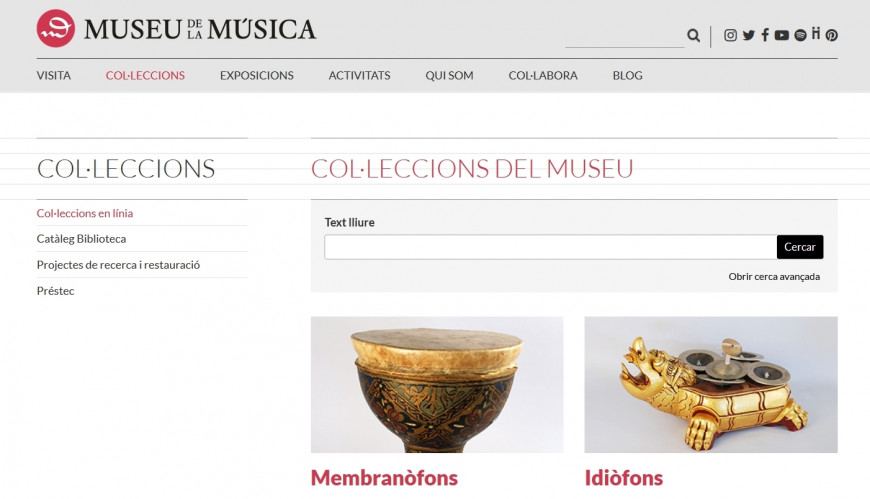
News
Open Collections at the Museu de la Música
The automation of the Museum in recent years has enabled us to generate several layers of knowledge about the same object: the file with the organological documentation on an instrument, the image or identification image(s), the book or article that talks about it and even the sound or video or other information that enables us to understand the kaleidoscope of each piece. They all gradually come together in the catalogue of instruments, a central point of information that can also be found in the library or multimedia archive, for example. At present, and following many enhancements to the web application, the search results of the Col·leccions en línia section (the Online Collections section, which we internally refer to as “open collections”) allow us to link (manually rather than using search engines and common interfaces, which would be the short- or medium-term goal) images, books from the library (with a link to the catalogue) and the exhibitions or activities in which the musical instrument has been included, and now we are able to add sound or video, recorded either by us or by our collaborators.
In the case of many instruments, however, we are unable to obtain their sound, either due to their condition, in order to preserve them or for many other reasons. In those cases, the solution has been found on external platforms (such as YouTube or Spotify) which, in spite of not featuring exactly the same instrument as the one kept at the Museum, give us the option of adding a visual and/or sound reference that is as close to it as possible.
And a more recent process is the change to the descriptions of the instruments which, in addition to the most purely organological descriptions, will include the instruments’ history, social context and use.

Below is a brief description of the tool used by each collection, which will gradually and eventually converge into a single tool (the online catalogue of instruments):
- Organological documentation (catalogue of instruments and works of art): Description guidelines suggested by the CIMCIM (International Committee for Museums and Collections of Instruments and Music), which is part of the ICOM (International Council of Museums); and, of course, an automated database, Museum+, which does provide remote access to all the information on the pieces.
- Historical archive: In recent years this has undergone an intense cataloguing process in an AtoM database, in accordance with the General International Standard Archival Description (ISAD) guidelines, under the Barcelona Open Challenge project. In addition, it has been digitised (following metadata description guidelines such as Dublin Core) and made public, making it possible to consult 50% of the documents (photographs, manuscripts, music scores and objects) on the Museum’s website.
- Library: This has been catalogued, in accordance with international standards (MARC21, RDA, AACR2), on a database created with the open-source software KOHA, and the collection can be consulted both locally and as part of the catalogue of the CCUC (Collective Catalogue of Universities of Catalonia).
- Sound collection: This is part of the library catalogue and already includes all the pianola rolls and a small portion of the 78 rpm record collection.
- Multimedia archive: This is managed with the municipal Clipfiles repository and allows us to catalogue the entire digital collection – from images to sound and video recordings – according to the minimum Dublin Core standards. With the exception of the images of instruments and the digitised historical archive collection, both of which can be accessed from their corresponding catalogues, the multimedia collection is not yet available for consultation on the website.
In fact, this last section, the Multimedia Archive, is starting to take on its full role: some heritage instruments are in such good condition that we can still – albeit rarely – hear them. This means that, in some cases, we can still choose to digitise sound using sound or video recordings.


